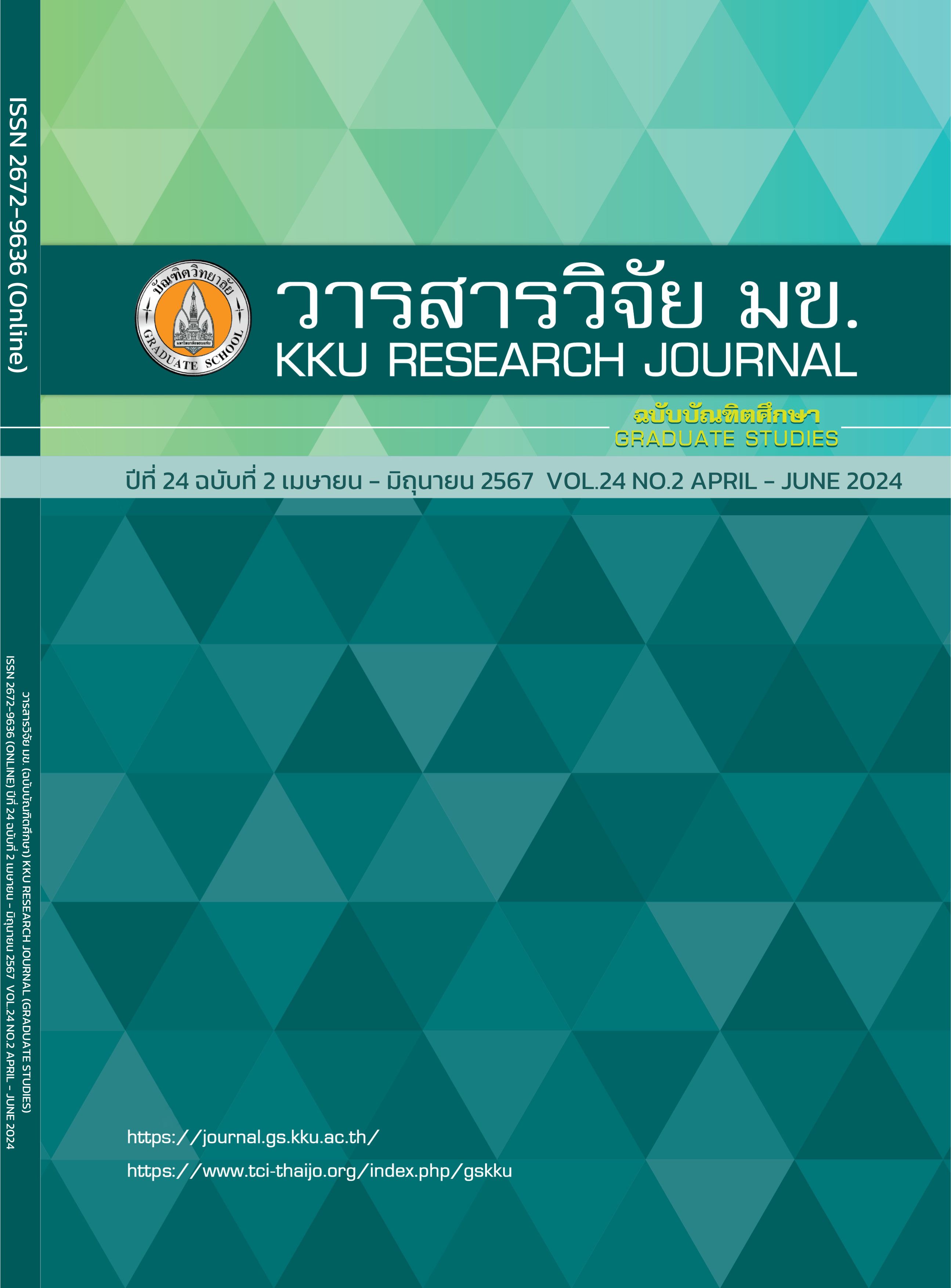Incidence of AKI-CKD Transition in Chaiyaphum Hospital
Keywords:
Acute kidney injury, Chronic kidney disease new case, AKI-CKD transitionAbstract
Acute kidney injury (AKI) is a condition in which kidney function decreases rapidly and it is a risk factor of chronic kidney disease (CKD). This study aimed to determine the incidence of CKD and change in glomerular filtration rate. The study design was a retrospective data and data were collected among hospitalized patients diagnosed with AKI at Chaiyaphum Hospital. A total of 281 patients were included in the study, 107 were non-CKD patients and 174 were patients with a prior history of CKD. The results showed was found that after 1 year of AKI, there were 39 new cases of CKD (36.4%) or the incidence of new cases of CKD was 37.8 per 100 person-years and 30 end-stage renal disease patients (10.7%), accounting for an incidence of 10.4 per 100 person-years. After 1 year of follow-up, the glomerular filtration rate (eGFR) was 46.00 (26.50, 73.50) ml/min/1.73m2 compared to the baseline of eGFR 54.00 (35.00, 80.50) ml/min/1.73m2 which was statistically significant decrease (p-value<0.001). In conclusion, AKI can lead to the progression of new CKD and has a deteriorating effect on pre-existing CKD and also had a statistically significant decrease in glomerular filtration value.
References
Kidney Disease Improving Global Outcomes. KDIGO Clinical Practice Guidline for Acute Kidney Injury. Kidney Int Suppl. 2012;2(1):1-138.
Maker J, Roller L, Dager W. Acute Kidney Injury. DiPiro’s Pharmacotherapy: A Pathophysiologic Approach. 12th ed. McGraw Hill. [Internet]. 2023 [cited 2011 May 31]. Available from: https://accesspharmacy.mhmedical.com/content.aspx?bookid=3097§ionid=269666129
Yodyingwittaya S. Factors Associated with Reduction Renal Function in Post Acute Kidney Injury Patients in Ratchaburi Hospital. Reg 4-5 Med J. 2019;38(2):140-151. Thai.
Treamtrakanpon W, Khongkha W. Impact and Incident of Acute Kidney Injury (AKI): A One/year Period of Study at a Center Hospital in Thailand. Srinagarind Med J. 2016;31(2):178-184. Thai.
Mahamitra N. Acute Kidney Injury in Intensive Care Unit Patients: Epidemiology and Outcome, A Prospective Multicenter Study [MSc thesis]: Chulalongkorn University. Thai.
Coca SG, Singanamala S, Parikh CR. Chronic kidney disease after acute kidney injury: a systematic review and meta-analysis. Kidney International. 2012;81(5):442-448.
Coca SG. Long-term outcomes of acute kidney injury. Current Opinion in Nephrology and Hypertension. 2010;19(3):266-272.
Duff S, Murray PT. Defining Early Recovery of Acute Kidney. CJASN 2020;15:1358-1360.
Chawla LS, Bellomo R, Bihorac A, Goldstein SL, Siew ED, Bagshaw SM, et al. Acute kidney disease and renal recovery: consensus report of the Acute Disease Quality Initiative (ADQI) 16 Workgroup. Nat Rev Nephrol 2017;13:241-257.
Chaimay B. Sample Size Determination in Descriptive Study in Public Health. Thaksin J. 2013;16(2):9-18. Thai.
Kidney Disease Improving Global Outcomes. KDIGO 2012 Clinical Practice Guideline for the Evaluation and Management of Chronic Kidney Disease. Kidney Int Suppl. 2013;3(1):1-150.
Horne KL, Packington R, Monaghan J, Reilly T, Selby NM. Three-year outcomes after acute kidney injury: results of a prospective parallel group cohort study. BMJ 2017;7:1-7.
Downloads
Published
Issue
Section
License
Copyright (c) 2024 KKU Research Journal (Graduate Studies)

This work is licensed under a Creative Commons Attribution-NonCommercial-NoDerivatives 4.0 International License.



